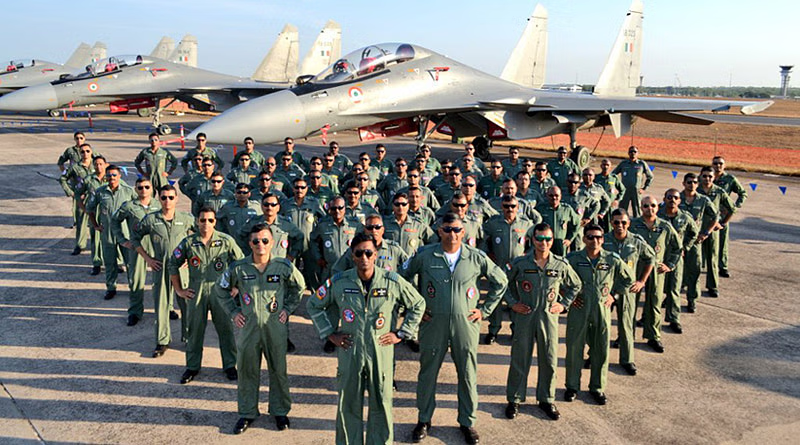Indian Air Force’s Strategic Move to Acquire TAPAS Drones for Enhanced Surveillance. In a major step to bolster indigenous unmanned surveillance, the Indian Air Force (IAF) has proposed acquiring 10 TAPAS drones from the central government. On Sunday, defense officials revealed that six of these indigenously developed drones will go to the IAF, while the other four will be assigned to the Indian Navy.
The IAF is set to lead the induction and acquisition process for these TAPAS drones, which will soon be reviewed by the Defence Ministry. Presently, the acquisition involves only the IAF and the Indian Navy.
Focus on Indigenous Development and Operational Needs
TAPAS drones, classified as medium-altitude, long-endurance (MALE) unmanned aerial vehicles, are a product of the Defence Research and Development Organisation (DRDO). They will be manufactured by a consortium of Bharat Electronics Limited (BEL) and Hindustan Aeronautics Limited (HAL).
The Tactical Airborne Platform for Aerial Surveillance-Beyond Horizon 201 (TAPAS BH-201), formerly known as Rustom-II, is designed to meet surveillance needs similar to those of the General Atomics MQ-1 Predator.
While the TAPAS drones have not yet fully met the defense forces’ stringent requirements, their initial induction is expected to facilitate necessary upgrades and refinements, eventually meeting broader operational needs. The IAF currently employs Israeli-made Searcher, Heron Mark-1, and Heron Mark-2 drones and plans to add American Predator MQ-9B drones through a tri-services acquisition.
Enhancing Surveillance on Strategic Fronts
The deployment of six indigenous TAPAS drones will markedly enhance unmanned surveillance capabilities across both the northern and western fronts.
The IAF has been a vocal supporter of the ‘Make in India’ initiative, placing or planning substantial orders for 180 Light Combat Aircraft (LCA) Mark 1A and 156 Light Combat Helicopters (LCH), valued at approximately ₹1.6 lakh crore.
The Indian Navy, meanwhile, intends to use the TAPAS drones for maritime surveillance. The delivery timeline is anticipated to accelerate, with the initial unit scheduled for deployment within 24 months from the signing of the contract. DRDO continues to work on the TAPAS project to improve its performance further.
Addressing Performance Challenges and Future Developments
The TAPAS drones encountered difficulties in meeting the Joint Services Qualitative Requirements, particularly sustaining flight at 30,000 feet for over 24 hours, leading to their exclusion from mission mode projects. During testing, the TAPAS drones reached an altitude of 28,000 feet and demonstrated an endurance exceeding 18 hours.
The IAF’s proposal underscores its commitment to indigenization and support for the development of domestic defense capabilities. The acquisition of TAPAS drones is a step towards self-reliance in defense technology and strengthens the surveillance capabilities of India’s armed forces.
This strategic maneuver signifies a major achievement in India’s defense technology progress. The continuous development and enhancement endeavors aim to tackle current performance shortcomings and fulfill the rigorous demands of contemporary warfare.
In addition to enhancing surveillance capabilities, the TAPAS drones represent a critical component of India’s broader defense modernization strategy. As the IAF and Indian Navy integrate these drones into their operations, they will gain valuable insights and experience that will drive further technological advancements and operational efficiencies.The collaboration between DRDO, BEL, and HAL is pivotal in achieving these objectives.
By focusing on indigenous development, the IAF and the Indian Navy are not only strengthening their own capabilities but also contributing to the growth of India’s defense industry. This move aligns with the government’s vision of making India a global hub for defense manufacturing and innovation.
In conclusion, the IAF’s proposal to acquire TAPAS drones is a testament to its forward-looking approach and dedication to enhancing India’s defense capabilities through indigenous development. As these drones become operational, they will play a crucial role in safeguarding the nation’s interests and ensuring strategic superiority in key areas of operation.
Also Read:
The Urgency of the MRFA Initiative to Bolster India’s Air Force
